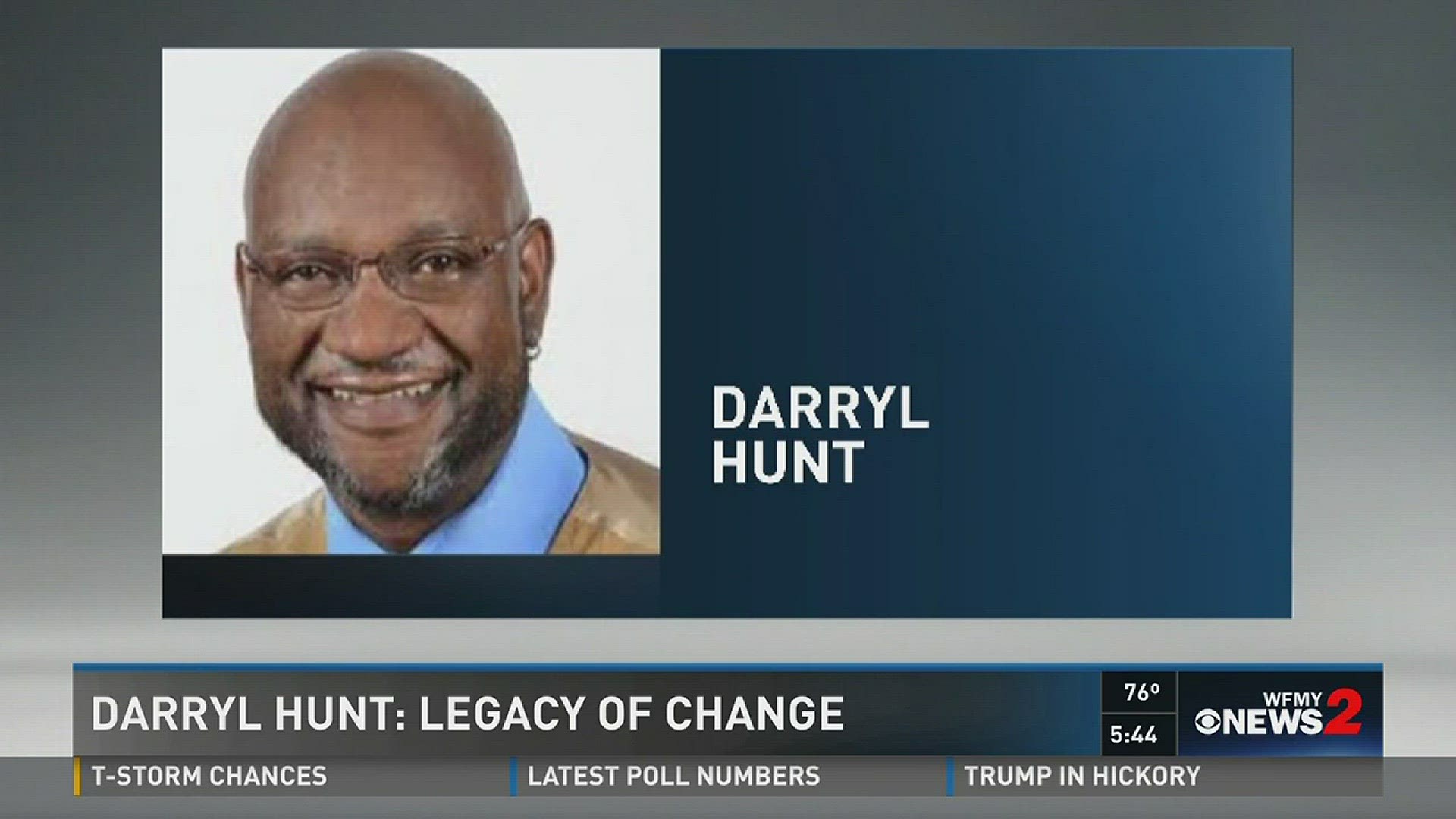WINSTON-SALEM, NC -- When Darryl Hunt was freed from prison Christmas Eve 2003, his fight for justice continued. It wasn't just for himself, but for every person wrongly convicted. He became a champion for the Innocence Project.
Now, 12 years after walking free, Hunt is dead. Police found his body in a car over the weekend. While an autopsy is being performed, his friends and loved ones are remembering him and his legacy.
One of his lasting legacies will be the change in how witnesses identify potential suspects. Much of his case was based on others misidentifying him in the rape and murder of Deborah Sykes in 1984.
According to Innocence Project research, misidentification comes into play in 72% of the cases where DNA has proven the person's innocence.
Hunt was exonerated in 2004. At the time, the Winston-Salem Police pledged to adopt new guidelines for the witness ID program. In 2007 WSPD started using computer photo-line up versus paper pictures. Eight pictures instead of six, the photos were shown individually, the computer recorded the length of time each witness looked at the pictures, and the officer conducting the process didn't know who the real suspect was. All of these measures were new.
In 2008, North Carolina adopted these procedures and more. The Innocence Project has guidelines to cut down on misidentification:
Blind administration, where the officer administering the lineup is unaware of who the suspect is, can prevent suggestive statements or unconscious gestures or vocal cues that may influence the witness, thereby reducing the risk of a misidentification. For the small police agency with work force constraints, a method called the "folder shuffle" can be utilized to effectively blind the administrator.
Lineup composition
"Fillers" (the non-suspects included in a lineup) should resemble the eyewitness' description of the perpetrator. Further, the suspect should look similar to the fillers (for example, he should not be the only member of his race in the lineup, or the only one with facial hair). Eyewitnesses should also not view more than one identification procedure with the same suspect.
Instructions:
The person viewing the lineup should be told that the perpetrator may or may not be in the lineup and that the investigation will continue regardless of the lineup result. This reduces the pressure on the witness of feeling like they have to pick a perpetrator. The witness should also be told not to look to the administrator for guidance.
Confidence Statements:
Law enforcement should elicit and document a statement from an eyewitness articulating his or her level of confidence in the identification made at the time that the identification is made.
Recording:
Identification procedures should be videotaped and/or audiotaped whenever possible.
Fourteen states overall now use this process. Hunt's lawyer, Mark Rabil says Hunt will continue to make a difference. "He was a huge inspiration to so many people and his legacy will live on."
Funeral arrangements have not yet been announced

